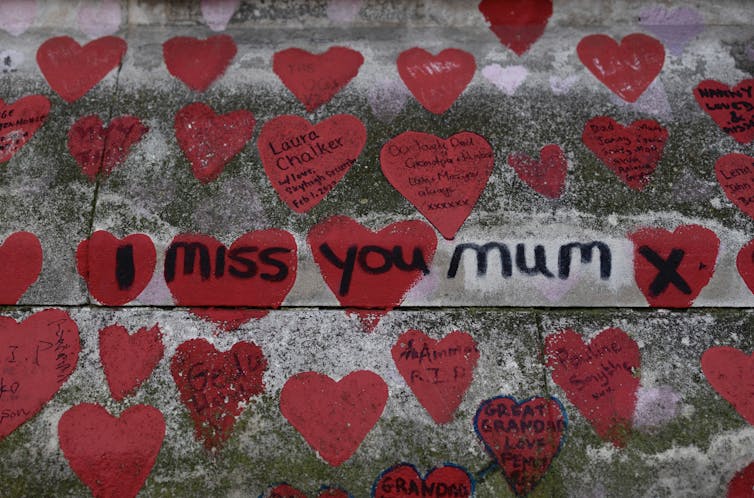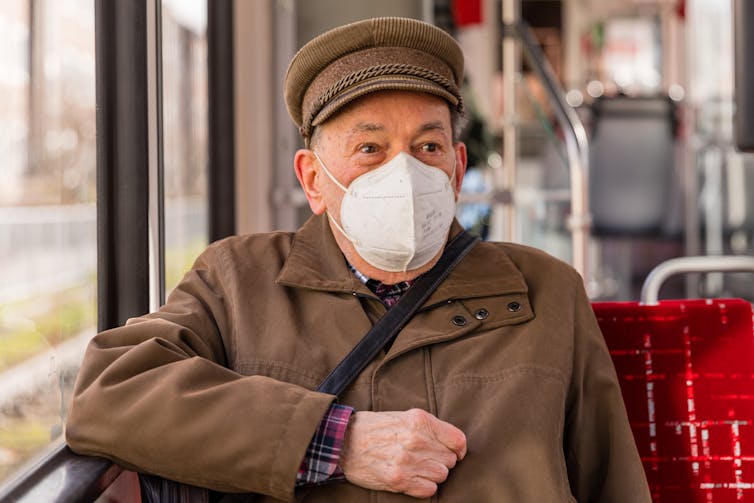COVID barely gets a mention these days – here’s why that’s a dangerous situation

By Simon Nicholas Williams, Swansea University
The United States experienced its second largest COVID wave of the pandemic in January 2024. For the year to December 2023, in England COVID rates peaked at around one in 24 people. During the same month, Singapore also experienced record COVID cases and a spike in hospitalisations.
COVID, then, is still a major public health problem, accounting for 10,000 deaths in 50 countries and a 42% increase in hospitalisations during December 2023 alone.
COVID may not be a global health emergency at the moment, but it is still killing and harming far too many people worldwide.
Yet, judging by the lack of media coverage and social media attention, at least compared to earlier in the pandemic, you might be forgiven for thinking that COVID is no longer a big deal.
But acting as though COVID doesn’t exist or isn’t a problem is a dangerous situation.
COVID complacency, by governments, the media and the public, is a threat to the overall health of the population, to health services and particularly to those most vulnerable, including older adults and those with pre-existing health conditions.
Contrary to the popular misbelief, COVID is not getting milder. We have known this for a while, but new research is starting to suggest that Omicron variants might be evolving into more severe forms.
Another common misapprehension is that once we have had COVID, which most of us have by now, our immune system is all the better for it.
While infection does lead the body to produce antibodies, getting our antibodies from vaccines and boosters is a safer option, particularly in light of growing evidence that repeat COVID infections increase the risk of long COVID symptoms, hospitalisation and death.
Also, high COVID rates add pressure to already strained health systems. COVID, along with flu and other respiratory viruses are playing their part in the healthcare crisis being experienced in the UK and a number of EU countries, for example – and long COVID is responsible for substantial financial burden on health services.
It’s perhaps understandable why many people are less interested in COVID these days. It’s been a long four years.
In my research with colleagues on public attitudes to COVID, we found as early as winter 2020 that people were getting fatigued by COVID news and information. But raising awareness of the ongoing risks posed by COVID remains as important as ever.
How to fight COVID complacency
First, we need to ensure vaccine uptake is as high as possible. In the UK, like many countries, booster uptake amongst those eligible this year has been significantly lower compared to last year, and fewer population groups have been offered the vaccine. In future campaigns, boosters should be offered more broadly.
But broadening vaccine access is only one part of the puzzle – for example in the US, where new boosters are available to everyone, only two-in-ten have taken the offer up, including only four-in-ten of those aged over 65.
One of the most common reasons for not getting boosted is the misconception that once a person has been infected there is no point in getting vaccinated. Vaccine campaigns should be accompanied by proactive, visible and clear public health messaging to inform the public that boosters can still help to reduce the risk of illness, hospitalisation, and defend against newer COVID variants such as JN.1, which was named by the World Health Organization (WHO) on December 19 2023 as a “variant of interest” and may be more infectious than other variants.
Second, we can still make use of protections that work. For example, fundamental investment in better ventilation is much needed. Cleaner air is essential for public health and will have benefits that extend beyond COVID.
Good ventilation can not only reduce the spread of COVID and other respiratory viruses, but can generally help reduce indoor air pollution, and can even improve things such as school attendance and concentration in the classroom.

Spain, for example, has just reintroduced face mask rules in hospitals and other healthcare settings. Existing evidence suggests that masks do work to help reduce the transmission of COVID. Masks have been controversial, but can be thought of like umbrellas – we can use them as, when and where needed.
Other countries would also do well to follow WHO advice and reintroduce face mask regulation in medical settings, to reduce hospital acquired infections, protect vulnerable patients and reduce sickness and absenteeism amongst healthcare workers.
We can still live with COVID and at the same time respect, and try to reduce, the harm it can cause.![]()
Simon Nicholas Williams, Lecturer in Psychology, Swansea University
This article is republished from The Conversation under a Creative Commons license. Read the original article.



